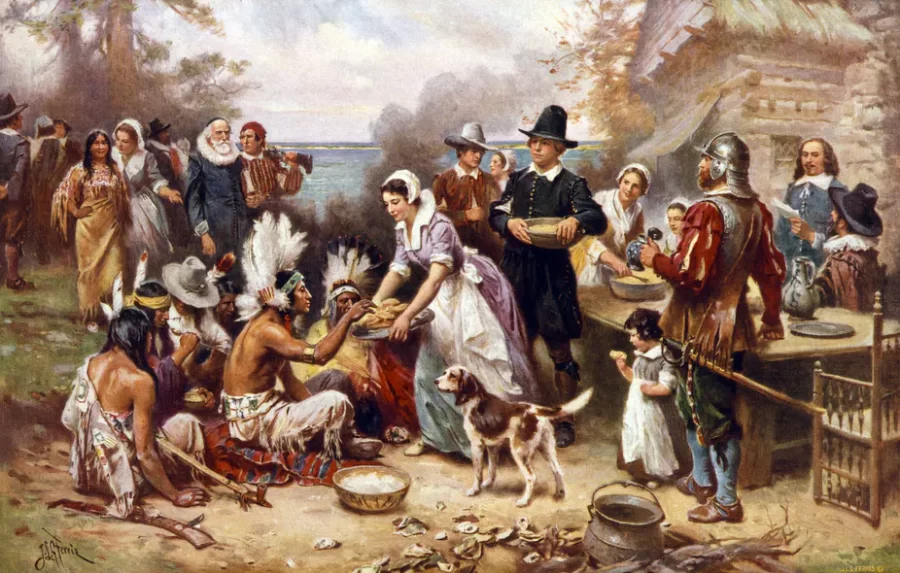The Truth Behind Thanksgiving: A Story Untold
November 30, 2021
Thanksgiving is a day for celebration and family bonding. For others, it’s a long-needed three day break from school. Every child in America knows how the story goes: the pilgrims sailed the ocean blue and became friends with the Indigenous people. Together, they celebrated their friendship by giving thanks. However, the truth is much darker than what we were taught.
The Indigenous community remember Thanksgiving not as a day of celebration but as a reminder of mass genocide. One of the many blessings the Europeans brought to the Americas was foreign disease. The introduction of smallpox, measles, and typhus killed nearly 90% of the Indigenous population. Pre-European colonization, the Wampanoag were a thriving population of 40,000 inhabiting present-day Massachusetts and Rhode Island. On a calm, beautiful day in the year 1620, the Wampanoag saw a ship arrive on the shore. It was not the first ship they had seen, and it certainly wasn’t the last. Little did they know, these newcomers would leave a permanent branding on their people as a whole.
The Mayflower was the name of the strange ship, containing 102 passengers seeking religious freedom from Europe in the “New World.” Their journey to the Americas lasted 66 days. At last, they arrived in Massachusetts where they would establish the first pilgrim village. Conditions were harsh as they were not familiar with the land. The natives took it upon themselves to teach the Europeans their ways of life. Governor William Bradford organized a celebratory feast in honor of their success; he would later organize another feast in commemoration of the slaughtering of Pequot women and children. An alliance between the Wampanoag and the Europeans formed and lasted more than 50 years. However, as August Walker said: there cannot be peace without, first, a great suffering. As more Europeans moved to Plymouth, they demanded control over the Wampanoag. War rampaged the land, devastating half of the Native American population and 30% of the English. Indigenous leader Metacomet, who originally wanted peace, was beheaded during battle, and the English displayed his head on a spike for a long 25 years to set an example.
The problem many find with Thanksgiving is not the holiday itself but the erasure of Indigenous history it causes. Given the history surrounding the holiday, many are questioning if it should even be celebrated at all. A senior said,“[He] hates how every year [he’s] reminded of the suffering [his] ancestors endured for hundreds of years.” Not only is Indigenous history forgotten, but harmful stereotypes are created as well. A sophomore with Indigenous roots said, “[The Indigenous people] weren’t some naive, friendly group” they were “people who saw others suffering and taught them how to live; [They] were not savages.”
Indigenous discrimination continues to be a major issue. When celebrating Thanksgiving, think about what it is you are celebrating. Should America continue teaching a fairytale version of history? Or is it doing more harm than good? Regardless, a lot more turkeys could use a little mercy.


